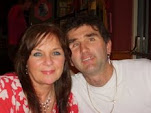


The Kent male photographed by Marc Heath
FRIDAY 30 APRIL
Another warm day, with clear skies and light SW winds. Also another day out with Mick Frosdick. Our target bird today – an IBERIAN CHIFFCHAFF in North Kent….
WALDERSLADE (NORTH KENT)
We arrived on site at 1030 hours and after a 300 yard walk through the woodland belt to the clearing on the other side, walked out into warm late morning sunshine to find the bird – a singing male IBERIAN CHIFFCHAFF – showing well. It was singing fairly repeatedly not that far away from two male Common Chiffchaff territories and was a classic rendition of the song uttered by birds in NW spain. In terms of appearance, it was pretty much standard, with pale orange-brown leg colour, largely yellow plumage colouration, yellow supercilium, yellow thighs and pale bill. The diagnostic Wood Warbler-like call note was uttered on several occasions but it did mimic Common Chiffchaff on occasions, although not exactly and in a rather subdued fashion. There was some yellow on the underwing coverts, with a green rump and rather dark lores.
The Walderslade singing male Iberian Chiffchaff in North Kent, superbly photographed by Ian Hardy. Note the yellow in the supercilium, in the underparts and along the flanks, and the extensive pink on the lower mandible. The pale legs are not obvious in these two shots.
RAINHAM MARSH RSPB (LONDON/ESSEX)
A Dark-bellied Brent Goose was visible on the River Thames, whilst the reserve held Common Tern, many Common Swifts, House Martins, Sand Martins and two singing male Common Whitethroats.
BATFORD (HERTS)
No sign of Darin’s Whinchat but 18 Common Swifts, Green Woodpecker, a Common Whitethroat and 2 rattling male Lesser Whitethroats.
NORTON GREEN (HERTS)
Made up for my earlier dip by connecting with two gorgeous male WHINCHATS feeding on the common land at Norton Green. They were associating with a flock of brightly plumaged GREENLAND WHEATEARS – 14 in total. A male Common Whitethroat was in song.
Walking down the lane towards the Common, mainly in the task of seeing GARDEN WARBLER (a male was quickly seen), I found a singing male Western Reed Warbler in reeds around the small pond opposite Oakapple Cottage,
CHESHAM FISHING LAKES (BUCKS)
The Great Crested Grebes were still attending the two young, whilst two Coot nests were active and a Mallard was with 8 ducklings. Four House Martins were overhead, with a male Reed Bunting in song and the first WESTERN REED WARBLERS back on territory.
MARSWORTH RESERVOIR, TRING (HERTS)
A Song Thrush was in full song in the entrance wood whilst the reedbed held Western Reed Warblers and at least 1 Cetti’s Warbler. Common Swifts numbered 138 birds, with 63 House Martins and 106 Barn Swallows.
On the breeding front, 16 Great Crested Grebes entertained two active nests and the female Red-crested Pochard was accompanying 7 ducklings (Vicky Duxbury had initially seen 9 on 28 April).
WILSTONE RESERVOIR, TRING (HERTS)
A late evening visit resulted in 12 Great Crested Grebes, 13 Mute Swans, 3 drake Shoveler, 12 Gadwall, 5 Northern Pochard, 3 Greylag Geese, 8 HOBBIES, 114 Common Terns, 70 House Martins and 243 Common Swifts.
I was chatting with both Steve Rodwell and Dave Bilcock at the top of the steps when a BAR-TAILED GODWIT appeared at 1928 hours and flew strongly north overhead. It was probably a female as it had no evidence of reddish colouration. An excellent record.
So that was it – April 2010 over and a further 23 species added to my Year List. Many migrants were now ‘under the belt’ and the graph below illustrates my progress through the first four months of the year. The respective totals being 160, 193, 235 and 258.

No comments:
Post a Comment